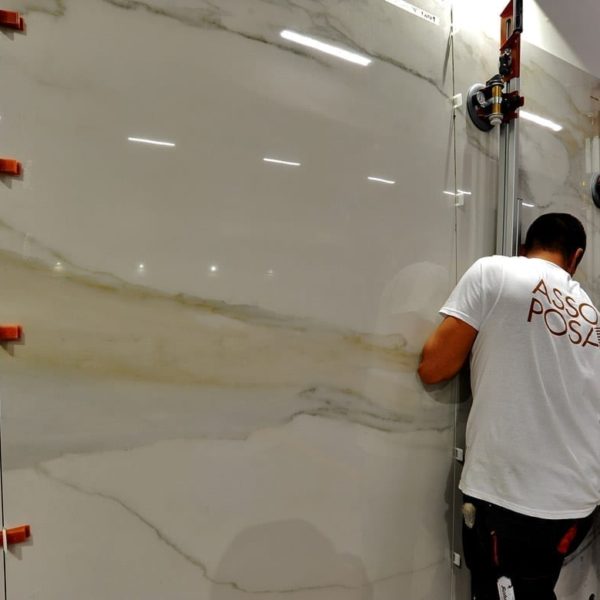Technical


Ceramic tiling in accordance with standards: joints | by Alfredo Zappa
Article published in: "Large-size Italian ceramic tiles"
Joints perform a very important function within ceramic tiled surfaces. Their correct installation is essential in many projects to ensure the durability and functionality of the floor systems. The UNI 11493 standard classifies joints in 4 categories: structural joints, control joints, expansion joints and perimeter joints. It also distinguishes between in-situ joints and prefabricated joints.
The parties involved
The designer: responsible for sizing and positioning the joints and for optimising the way they are integrated aesthetically into the architecture according to the structural characteristics of the building, the size of the surfaces to be tiled and the combination of the floor system and utilities or other finishing materials.
The client: provides all useful information on the use of the spaces and the stresses they are likely to be subject to so as to allow the designer to choose the joints correctly. Works together with the designer on the layout and aesthetics.
The tile layer: responsible for checking the quality of the prefabricated joints and the bulk materials required to create the joints in situ and for ensuring they are correctly stored on site. Installs the joints in the tiling in accordance with the requirements of the project and the indications of the works manager.
In detail
The structural joints must be aligned with the joints in the building structure. To perform their function effectively they must extend through the entire flooring system (tiles + substrate) and they must have the same width (distance between the two sides) as the building joints. Control joints are required for very large tiled surfaces and are created by cutting through the screed to at least 1/3 of its thickness, but without touching the electro-welded mesh (where present). They should divide the floor surface up into regular rectangles with a ratio between side lengths of no more than 1:1.5. For interiors this corresponds to areas from 5×5 metres to 6×4 metres in size and for exteriors from 3×3 metres to 4×2.5 metres. Expansion joints are used to compensate for movements of large floor areas and should only extend through the thickness of the tiles. The areas of tiling divided up by the expansion joints should be the same size as those created by the control joints. It is important for the grout to bond only to the edge of the tile and not to the substrate, so it may be useful to insert a strip of paper into the bottom of the joint before grouting. Perimeter joints are always required at the edges of the tiled floor where it borders with other vertical or horizontal surfaces. The widths of the expansion and perimeter joints must be specified according to the project design data (tile size, installation layout, type of adhesive, etc.) and should generally be between 5 mm and 10-12 mm.
In-situ joints can be created by filling the gap in the floor with a compressible material and sealing it with a permanently elastic product compliant with standard UNI EN ISO 11600. Alternatively it is possible to use prefabricated joints consisting of strips produced in various types and sizes to fill the gap between two plastic or metal lateral anchoring elements connected by an element made of compressible material or a mechanically sliding device.
Other articles published in Large-size Italian ceramic tiles

A single seamless surface
Large size panels produced using dedicated manufacturing technologies create seam-less, continuous surfaces. However the joints are vital for avoiding problems during the floor’s service life.




